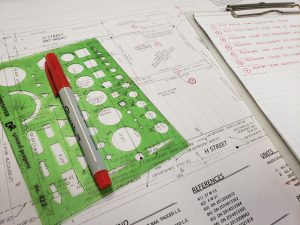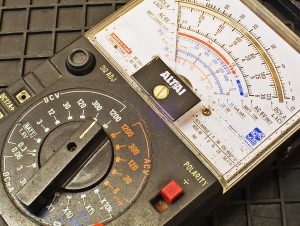Here’s the thing: solar power is invisible. You can’t see amps flowing through a wire or know your battery’s state of charge just by looking at it. Without monitoring, you’re basically flying blind, and “gut feel” isn’t a reliable energy management strategy. Monitoring tools—whether old-school meters, modern Bluetooth apps, or full smart systems—take the guesswork out of your setup so you can camp without anxiety (or spoiled food).
Modular Systems: The Old-School & Pro Way
Voltage Meters (Basic)
The simplest method of “monitoring” is checking battery voltage with a multimeter. It works…kind of. But voltage only tells part of the story—it varies with load, temperature, and battery chemistry. You might think your battery is 80% full when it’s actually circling the drain.
Shunt-Based Battery Monitors
This is the gold standard for modular setups. A shunt is basically a high-precision resistor placed in line with your battery negative. By measuring every amp in and out, it calculates state of charge, amps flowing, watt-hours used, and time remaining.
Popular examples:
-
Victron BMV-712: Accurate, reliable, with Bluetooth app support.
-
Renogy Battery Monitor: More budget-friendly, still very usable.
These let you know exactly how much juice you’ve got left—not a guess based on voltage.
Charge Controller & Inverter Displays
Most MPPT controllers and inverters have their own displays showing volts, amps, and watts. These are helpful for checking panel production and inverter loads. But without a shunt, you’re still missing the full picture of total system balance.
All-in-One Systems: Modern Plug-and-Play
The beauty of Bluetti, EcoFlow, Jackery, and similar power stations is that they come with integrated monitoring. Bright LCD screens give you:
-
Battery percentage
-
Input watts (from solar, wall, or generator)
-
Output watts (DC & AC separately)
-
Estimated time to empty or full
And most pair with mobile apps over Bluetooth or Wi-Fi. Apps let you:
-
Track charge/discharge history
-
Adjust charging speeds
-
Set timers or ECO modes
-
Get alerts for low battery or overloads
For a lot of folks, this level of integration is a huge selling point—you don’t need to install extra shunts or meters.
Smart Features & Connected Systems
Some setups go even further:
-
Victron SmartShunt + VRM Portal: Cloud monitoring of your system anywhere with an internet connection. Great if your camper sits in storage and you want to check battery status remotely.
-
Renogy One Core: A hub that connects solar, batteries, tank monitors, and even smart lighting into a single app.
-
EcoFlow & Bluetti Ecosystems: Allow you to chain multiple units, control them through apps, and integrate with home backup systems.
This is edging into “smart home on wheels” territory, but for full-timers or tech geeks, it’s worth the upgrade.
Why Monitoring Matters in Real Life
-
Prevent Surprises: Instead of your fridge dying overnight, you’ll see your batteries dropping and know it’s time to cut loads or chase sun.
-
Optimize Usage: Watching real-time watts helps you understand which appliances are power hogs. Spoiler: it’s always the microwave.
-
Plan Upgrades: If you consistently run short on power, your monitor will show whether you need more panels, bigger batteries, or both.
-
Catch Issues Early: Sudden drops in solar input might mean a shaded panel or bad connector. Better to catch it now than after the ice cream melts.
Practical Tips
-
Calibrate your shunt-based monitors after install for accuracy.
-
Don’t rely on voltage alone—it’s misleading, especially for lithium batteries.
-
Check data regularly at first to learn your system’s “normal.”
-
Set alerts on apps so you don’t have to babysit.
-
If you’re old-school, at least carry a multimeter—you’ll need it eventually.
Wrapping It Up
Monitoring isn’t about being a data nerd—it’s about peace of mind. Whether it’s a fancy app that graphs every watt or a simple shunt display that tells you “80% full,” knowing your numbers means no surprises when you’re off-grid. The more you understand your system, the longer you’ll stay comfortable without running for shore power or listening to a noisy generator.
Your Turn
-
Do you check your system’s numbers daily, or only when things go wrong?
-
Have you ever been surprised by how much power a single device used?
-
Would you invest in a shunt monitor for accuracy, or trust an app from an all-in-one unit?
-
Do you prefer data simplicity (“battery 60%”) or full nerd mode (graphs, amps, trends)?
-
Have you ever caught a wiring or shading issue just because your monitor showed weird numbers?






